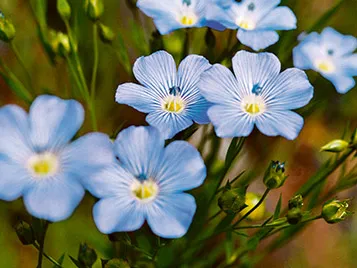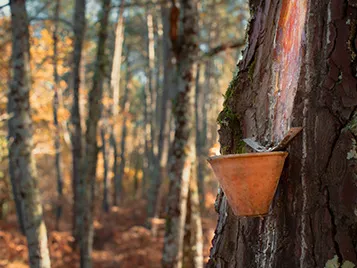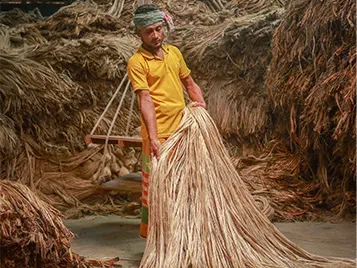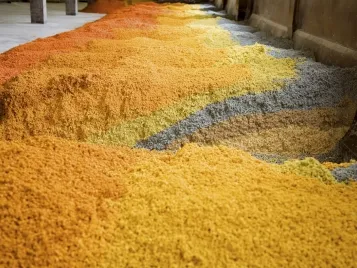How Marmoleum is Made
The craft of manufacturing linoleum has evolved over the last 150 years. Forbo has been driving this development through its Marmoleum brand. Making Marmoleum flooring is an art, which you can not learn at any trade - or craft school. In fact, only a handful of people know how to make Marmoleum.
Determining the correct mixture of ingredients, allowing the right time for raw materials to settle, applying the correct temperature & pressure are skills a Marmoleum Experts must master. We are proud of our experts, as they take pride in creating our Marmoleum floors.
Marmoleum is made from the following ingredients:
Flax seed oil
The main ingredient in Marmoleum is flax seed oil, produced by pressing the seeds of the flax plant. The flax plant is an easy-to-cultivate species delivering annual crops of flax seed as well as fibers for the textile industry.
Properties of Flax:
• Taking up CO2
• Almost no waste in the production chain
• Flax seed oil: virgin rapid renewable raw material

Wood Flour
Wood flour is obtained from the remainders of the timber industry. The wood of roots and branches is finely grinded and used in linoleum. No tropical hardwoods are ever used.
Properties of Wood Flour:
• Trees take up CO2 during their growth
• Recycled renewable raw material

Pine Rosins
Pine rosins are mixed with the vegetable oil pressed from the flax seed to produce a flexible binder. The pine trees from which the rosins are extracted come from controlled forestry locations throughout the world.
Properties of Rosins:
• Originating from trees that take up CO2
• A virgin rapid renewable raw material

Jute
The reverse side of Marmoleum is made from woven jute. Jute (also known as hessian or burlap) is a natural and important eco-friendly vegetable fiber. It is produced from the stalks of the jute plant. Jute is plentiful and highly renewable.
Properties of Jute:
• No waste-crop, taking up CO2 during growth
• Rapid renewable virgin raw material

Limestone
Limestone is one of the world’s most abundant resources. After sand, it is the most available natural material in the world.
Properties of Limestone
• Unlimited resource
• Abundant virgin raw material

Pigments
When it comes to our beautiful colors, only ecologically friendly pigments are used.
Properties of the Pigments
• Virgin raw materials Titanium white - iron oxide based - durable
• Other pigments - organic

